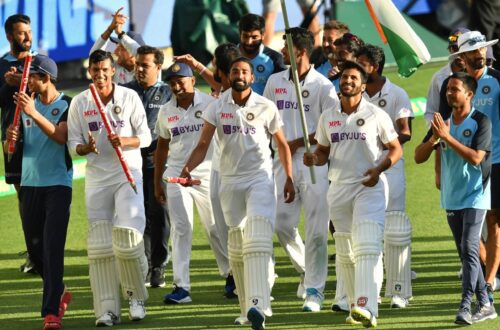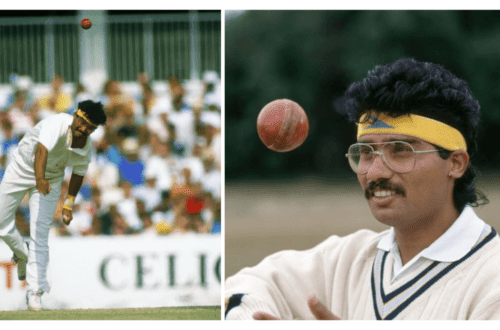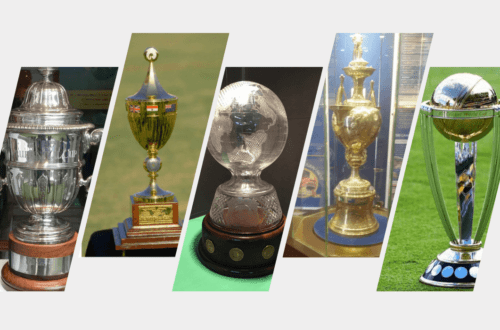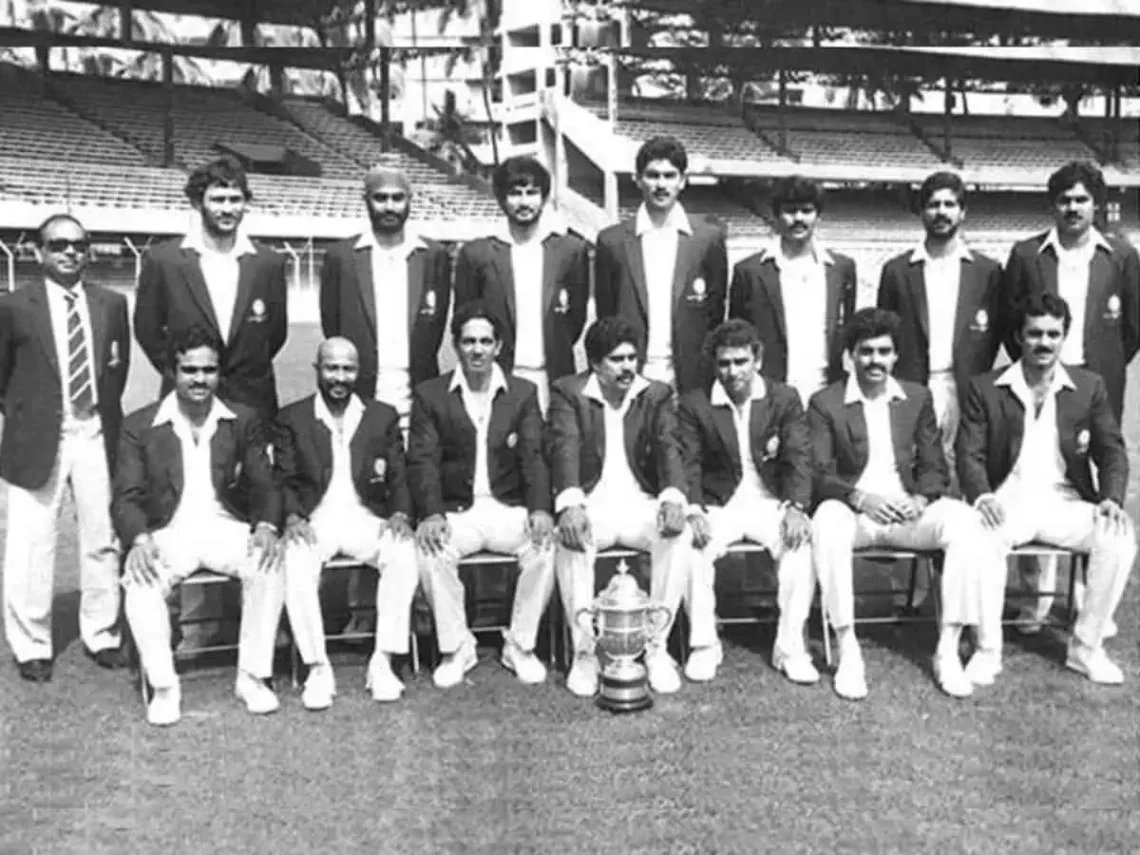
1983 World Cup – India’s Wining Moments – Part1
The 1983 World Cup stands as a formative moment in the history of Indian cricket. Prior to this tournament, India was considered an underdog in international cricket, often overshadowed by the dominance of cricketing giants like the West Indies, Australia and England. The 1983 World Cup was hosted by England and featured eight nations fighting for cricketing glory. What transpired over the course of this tournament would forever change the narrative of Indian cricket.
Table of Contents
India Before 1983 World Cup
In the inaugural Cricket World Cup held in 1975, and Second World Cup in 1979, India embarked on their global cricketing journey. While the team showed promise, they faced strong opposition and didn’t make it to the later stages. This early experience set the stage for future improvements and honed India’s skills on the international cricketing platform. In these two previous world cup outings India only managed to win one match, that too against East Africa, in 1975. In 1979 India lost All its matches, including against the minnows Sri Lanka.
- 1975 – Out in Group Stage
- 1979 – Out in Group Stage
- 1983 – Winner
- 1987 – Semifinal
- 1992 – Out in Group Stage
- 1996 – Semifinal
- 1999 – Super Six
- 2003 – Runnerup
- 2007 – Out in Group Stage
- 2011 – Winner
- 2015 – Semifinal
- 2019 – Semifinal
1983 World Cup Journey
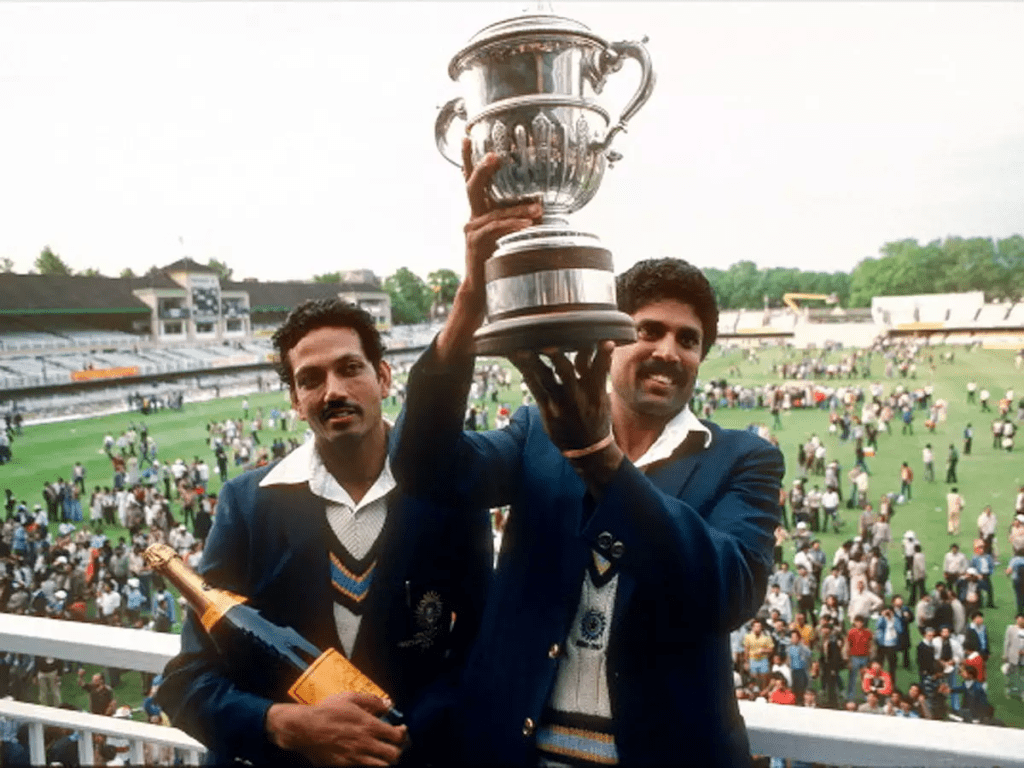
India’s Situation at the time of 1983 World Cup
In the years leading up to the 1983 World Cup, Indian cricket faced a challenging period. Despite occasional moments of brilliance, India was yet to establish itself as a cricketing powerhouse. The team struggled to find consistency on the international stage. In two previous world cup outings India only managed to win one match, that too against East Africa, in 1975. In 1979 India lost All its mates including against the minnows Sri Lanka.
In fact, the team had its return flight advance booked before the start of the knockout stage, which was later rescheduled once India miraculously made it to the semis. Such was the lack of confidence of the administrators in the team because of the past performances.
The Indian Team Of 1983 World Cup
The Indian team of 1983 World Cup, led by the charismatic Kapil Dev, was a blend of youth and experience. Sunil Gavaskar provided stability at the top of the order, while players like Mohinder Amarnath and Yashpal Sharma added depth to the batting lineup. The bowling attack, led by Kapil Dev himself, included the likes of Madan Lal, Roger Binny, and Kirti Azad, all of whom possessed the ability to take crucial wickets.
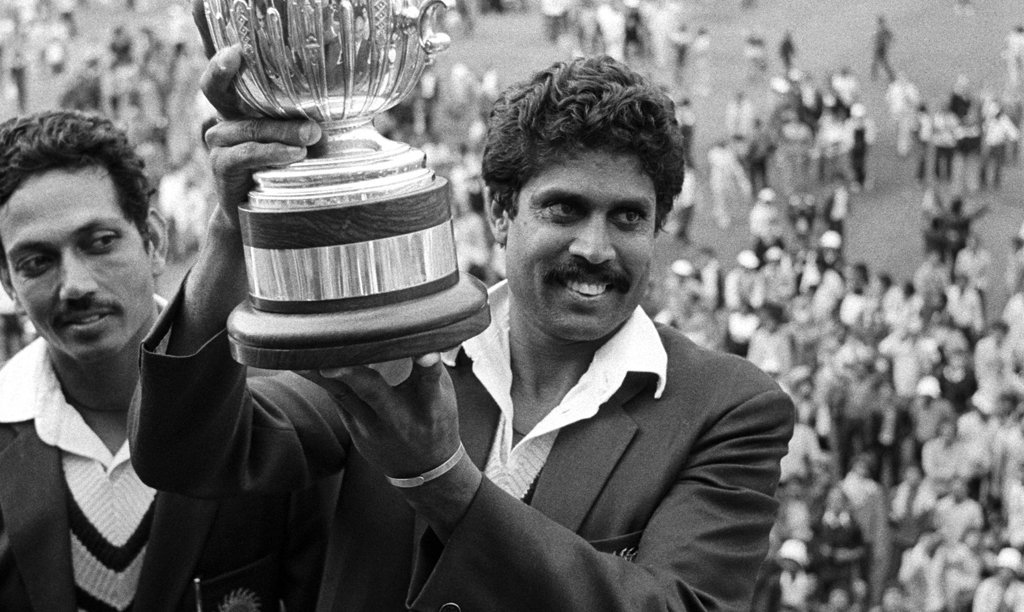

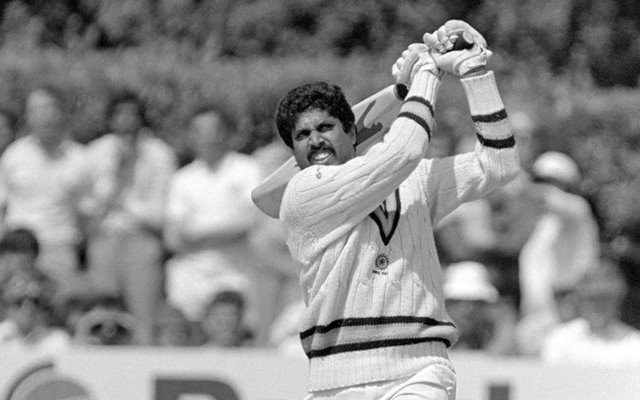
Kapil Dev: Kapil Dev, the charismatic all-rounder, led the Indian team to victory in the 1983 World Cup. His aggressive captaincy and crucial contributions with both bat and ball were instrumental in India’s historic triumph.
Sunil Gavaskar: Sunil Gavaskar was a legendary opening batsman known for his solid technique and impeccable defensive skills. He provided stability at the top of the order for India in the 1983 World Cup.
Krishnamachari Srikkanth: Known for his aggressive batting style, Srikkanth brought flair and energy to the team. His explosive innings at the top of the order were vital in setting the tone for India’s matches. He was also the top scorer in the iconic final.
Mohinder Amarnath: A superbly talented batsman and utility bowler, Mohinder Amarnath added depth to India’s batting line-up, Sunil Gavaskar in his book “Idols” described Mohinder Amarnath as the finest batsman in the world. His composed approach and ability to anchor the innings proved valuable in crucial moments.
Yashpal Sharma: Yashpal Sharma was a dependable middle-order batsman who played crucial innings under pressure. His contributions in pivotal matches were vital to India’s success.
Roger Binny: Roger Binny was a versatile all-rounder known for his medium-pace bowling and handy lower-order batting. His disciplined performances were crucial in providing balance to the team.
Kirti Azad: Kirti Azad was a useful all-rounder with a knack for breaking partnerships as a bowler and contributing valuable runs with the bat. His presence bolstered India’s resources.
Madan Lal: Madan Lal, an experienced seamer, brought depth to India’s bowling attack. His ability to take wickets at crucial junctures played a pivotal role in India’s success.
Syed Kirmani: Syed Kirmani was the reliable wicketkeeper of the team. His safe pair of hands behind the stumps and astute cricketing acumen were invaluable to the team’s performance.
Ravi Shastri: Ravi Shastri, a talented all-rounder, was known for his tight off-spin bowling and aggressive batting. His contributions in both departments added immense value to the team.
Dilip Vengsarkar: Dilip Vengsarkar was a stylish middle-order batsman renowned for his elegant stroke play. His consistency and ability to anchor the innings were assets to the team.
Sandeep Patil: Sandeep Patil was a hard-hitting middle-order batsman known for his aggressive style of play. His explosive innings in crucial matches proved to be game-changers for India.
Balwinder Sandhu: Balwinder Sandhu was a medium-fast bowler known for his ability to swing the ball. His crucial breakthroughs with the new ball were crucial in the tournament.
These players, under the inspired leadership of Kapil Dev, scripted one of the most memorable chapters in Indian cricket history by clinching the 1983 World Cup, an achievement that would forever be etched in the annals of the sport.
Analysing Each Match
9 June 1983, Manchester – India vs. West Indies (Group Stage):
The 1983 World Cup tournament began with a seismic upset as India, considered the underdogs, defeated the mighty West Indies, a team that had won the previous two World Cups. Yashpal Sharma’s gritty 89 and a composed 36 from Kapil Dev were instrumental in securing the victory.
9 June 1983, Leicester – India vs. Zimbabwe (Group Stage):
With the help of superb Bowling from Madan Lal(3/27), Roger Binny(2/25) and Kapil Dev(1/18) India restricted Zimbabwe to 155. Amarnath’s 44 and Sandeep Patel’s 50 help India reaching the target in 37.3 overs.
13 June 1983, Nottingham – India vs. Australia (Group Stage):
Australia, with the help of 110 of Trevor Chappell made a huge total of 320, Kapil Dev was the only bowler with 5/43, chasing that India saw a collapse and only managed to make 158. Australia won by 162 runs.
15 June 1983, The Oval – India vs. West Indies (Group Stage):
In their second group stage match with India, West Indies came back strongly and with the help of Viv Richard’s 119, West Indies made 282/9. Amarnath made a gritty 80 runs but India fall short of the target and got all out on 216, West indies won by 66 runs.
18 June 1983, Tunbridge Wells – India vs. Zimbabwe (Group Stage):
This match would go down in history as one of the most pivotal moments in the tournament. After a shaky start, India found themselves at 17/5 against Zimbabwe. Kapil Dev then played an innings of unparalleled brilliance, scoring an astounding 175 not out, rescuing India and propelling them to a total of 266/8. India went on to win the match by 31 runs, showcasing the team’s resilience and Kapil Dev’s indomitable spirit. This was the first ODI century by an Indian batsman and still is remembered as the innings that single handedly changed Indian cricket and rightly so.
18 June 1983, Chelmsford – India vs. Australia (Group Stage):
India’s victory over Australia, was a superb team effort with almost every batsman contributed, India made 247, it was a fighting total but Madan Lal, Roger Binny and Balvinder Sandhu had other plans. They ran havoc in the ranks of Australia and ended up with 4/20, 4/29 and 2/20 respectively.
22 June 1983, Tunbridge Wells – India vs. England (Semi-final):
In the semi-finals, India faced a formidable England side. The bowlers delivered a clinical performance, restricting England to 213, Kapil Dev took 3 for 35 and Mohinder Amarnath ends up with 2 for 27. Yashpal Sharma’s crucial 61, Mohinder Amarnath’s 46 and the highlight of the match 32 ball 51 from the dashing Sandeep Patil ensured India’s entry into the final.
The Threat of the Mighty West Indies:
In the final, India faced the West Indies, a team that had been invincible in World Cup history. Led by the Greatest captain of all time Clive Lloyd, Having a formidable batting lineup which includes Greats like Viv Rchards, Gordon Greenidge and Desmond Haynes and a bowling attack led by Malcolm Marshall, Andy Roberts, Joel garner and Micheal Holding, the West Indies were the favourites to lift the trophy for the third consecutive time.
25 June 1983, Lord’s, London – The Final Drama Unfolds:
Batting first in a bowling friendly pitch, India made 183, K Srikanth 38, Amarnath 26 and Sandeep Patil 27 were the top contributers. In a stunning turn of events, India’s bowlers, led by Madan Lal(3/31) and Mohinder Amarnath(3/12), rose to the occasion, restricting the West Indies to 140. Kapil Dev’s iconic catch to dismiss Vivian Richards became the symbol of India’s spirit and will to win. In a nerve-wracking finale, India emerged victorious, writing a new chapter in history.
Team Performance in 1983 World Cup
Kapil Dev, the inspirational captain, led from the front. His dynamic leadership and all-round brilliance were pivotal in India’s historic victory. Kapil scored a crucial 303 runs and took 12 wickets in the tournament.
Mohinder Amarnath‘s all-round display in the final against West Indies was legendary. His 26 crucial runs and key wickets earned him the Man of the Match. Overall, he scored 254 runs and took 8 wickets.
Roger Binny was the highest wicket taker with 18 wickets, Madan Lal was right behind him with 17 wickets.
Syed Kirmani had 14 dismissals, including 7 catches and 7 stumpings, he was as crucial in the overall schemes of things as any one. Be it K. Srikkanth, Sandeep Patil(216 runs), Ravi Shastri(182 runs and took 5 wickets), Balwinder Sandhu(8 wickets) or Yashpal sharma, Every player rose to the occasion when it matters most. We can safely say that it was a team effort and every member equally contributed in the historic win.
Impact of 1983 World Cup
India’s triumph in 1983 was a turning point for cricket, not just in India, but worldwide. It shattered notions about cricketing dominance and showcased that the sport was not the exclusive domain of established cricketing nations. The win ignited a cricketing revolution in India, inspiring a generation of players and fans.
In the subcontinent, the victory had a seismic impact. It elevated the stature of Indian cricket and paved the way for the emergence of cricket as a religion in the region. It also catalyzed the growth of the sport in neighboring countries like Pakistan, Sri Lanka, and Bangladesh.
Not only that, this world cup win, made a young boy dream of lifting the cup again and inspired him to play the sport even more. That young boy who eventually became cricket’s God, Sachin Tendulkar, is a product of this historic win. And the rest they say is history.
Conclusion
The 1983 Cricket World Cup was a testament to the power of belief, resilience, and teamwork. India’s triumph, led by Kapil Dev and his band of determined men, not only transformed the narrative of Indian cricket but also left an lasting impression on the global cricketing landscape. It remains a cherished chapter in the books of cricketing history, an underdog story that continues to inspire generations of cricketers and fans alike.



